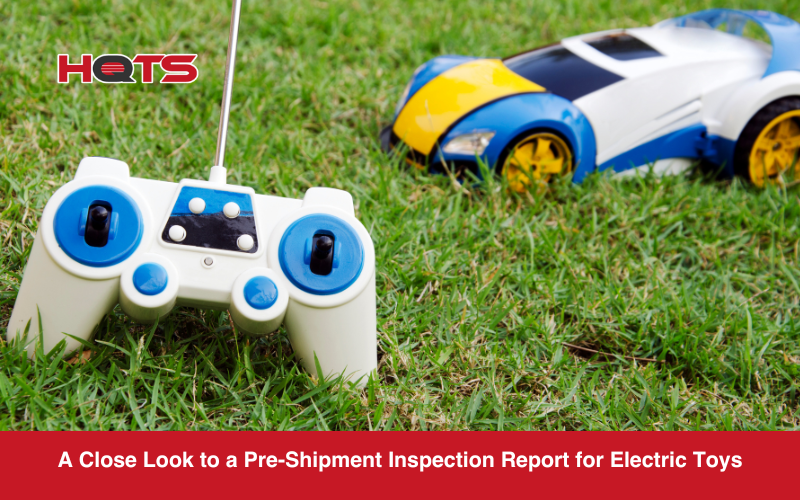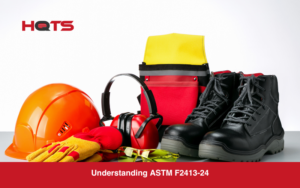The global toy market is rapidly evolving, with electric and electronic toys becoming more popular than ever. From interactive robots to smart cars and talking dolls, these products bring joy — but also increased safety risks. That’s where electric toy quality inspection comes in.
A comprehensive inspection process ensures every toy meets international safety standards, protects users from hazards, and builds long-term trust with consumers and regulators alike.
Key Standards for Electric Toy Quality Inspection
One of the most important standards in electric toy testing is EN 62115, the European safety standard for electric toys powered by batteries or external power supplies. This regulation focuses on preventing electrical hazards, ensuring insulation quality, and verifying that voltage levels remain within safe limits for children’s use.
In the United States, ASTM F963 serves as the benchmark for toy safety. It provides comprehensive guidelines covering electrical, chemical, and mechanical testing. This standard helps manufacturers ensure that toys sold in the U.S. meet strict safety and performance requirements.
Globally, ISO 8124 defines consistent testing methods that support compliance across multiple regions. It harmonizes international practices for evaluating the safety of electric toys, allowing manufacturers to streamline their quality control and certification processes for worldwide distribution.
Finally, EMC and battery safety regulations play a vital role in protecting users from electrical malfunctions. These standards ensure electromagnetic compatibility, prevent overheating, and promote safe battery design to avoid short circuits or leakage during normal use.
Best Practices for Importing Electric Toys
- Define AQL early — Critical: 0 is non-negotiable for safety.
- Require internal access — include in supplier contracts.
- Match item codes everywhere — PO, PI, carton, manual.
- Test spare parts — count and list every accessory.
- Use third-party QC — HQTS or similar; never rely on factory self-checks.
Case Study: Pre-shipment inspection report of an electric toy
A detailed pre-shipment inspection (PSI) is the last line of defense before goods leave the factory. This case study breaks down a real HQTS inspection report for an electric toy, highlighting common pitfalls and why third-party quality control matters.
The Product: A Cage-Protected RC Flying Ball
The toy in question is a spherical remote-control flying device encased in a protective cage—think of it as a kid-safe mini helicopter. It charges via USB or the remote, flies for about 5 minutes on a full charge, and comes with spare rotor blades. Ordered in a small run of 96 units (8 cartons), the inspection sampled 20 pieces using ISO 2859 standards with a strict AQL of Critical: 0, Major: Not specified, Minor: Not specified.
HQTS inspectors visited the factory on May 25, 2012, checking everything from quantity to drop tests. While quantity and shipping marks passed, workmanship, style/documentation, and field tests landed in “pending” status, leaving the final call to the client.
Key Findings from the HQTS Inspection Report
1. Quantity and Packaging: Green Light
- Shipment matched PO: 96 pieces ready, packed 12 per carton.
- Shipping marks clear: Cartons labeled with item “777-286,” net/gross weights, and dimensions within tolerance.
- Packaging sturdy: Gift boxes inside master cartons passed visual checks and a 1-carton drop test.
2. Workmanship: Minor and Major Defects Flagged
Out of 20 samples, inspectors found 0 critical, 2 major, 5 minor defects:
| Defect | Type | Example |
|---|---|---|
| Missing spare rotor blade | Major | One accessory pack short a blade |
| Rust on USB plug | Major | Corrosion risk for charging port |
| White glue marks | Minor | Visible on black plastic body |
| Exposed wires | Minor | Safety concern on main unit |
| Oil stains/scratch on gift box | Minor | Cosmetic but affects presentation |
| Poor light assembly | Minor | Loose or misaligned LED |
Photos documented every issue—glue smears, rusty plugs, and dangling wires. These aren’t deal-breakers alone, but they signal sloppy assembly.
3. Style, Color & Documentation: Mismatches
- Carton said “777-286”, but Proforma Invoice listed “REH46286”—a labeling error that confuses customs or retailers.
- Instruction sheet missed mention of an included “8” accessory (likely a tool or part).
- USB cable markings were reversed (arrows pointing wrong way).
4. Field Tests: Blocked by Factory
Several functional checks couldn’t proceed:
- Internal inspection denied — factory wouldn’t open units.
- Battery voltage & remote frequency tests skipped — no equipment provided.
- Charging/discharging times measured anyway via external methods and met specs (36–45 min charge, ~5–6 min flight).
Measurements like USB cable length (57 cm), gift box size (23×23×25.5 cm), and control range (>10 m) all passed.
Why These Issues Matter for Toy Importers
Even small defects can snowball:
- Rust on USB plugs → charging failures → returns.
- Exposed wires → potential shocks, especially with kids.
- Label mismatches → customs delays or rejected shipments.
- Missing parts → angry reviews and brand damage.
The report stayed “pending” because the factory blocked critical internal checks. Without seeing inside, you can’t confirm battery safety, soldering quality, or fire risks—huge red flags for electric toys.
Final Verdict from the Report
The shipment was pending client approval. With two major defects and blocked internal checks, most importers would demand rework or a discount. But the data gave the buyer leverage to negotiate fixes before containers left the port.
How HQTS Helps the Toy Industry Stay Compliant and Competitive
HQTS (formerly AsiaInspection, now part of QIMA) has inspected millions of toys across China and Southeast Asia. Their toy-focused services include:
- Pre-Shipment Inspections (PSI) — random sampling per AQL, full photo documentation, and on-site testing (drop, function, battery life).
- During Production Inspections (DUPRO) — catch defects mid-run before final assembly.
- Factory Audits — evaluate supplier capability, social compliance, and ISO 9001 alignment.
- Lab Testing — EN71, ASTM F963, CPSIA, REACH compliance for chemicals, small parts, flammability, and sharp edges.
- Loading Supervision — ensure correct quantities and no damage during stuffing.
For electric toys specifically, HQTS tests:
- Battery safety (overcharge, leakage)
- EMC/radio frequency compliance
- Charging port durability
- Child-resistant battery compartments
Clients get digital reports within 24 hours, with defects classified and repair recommendations. HQTS also seals passed cartons with tamper-evident stickers—proof the inspected lot is the shipped lot. Contact us today to ensure the quality and compliance of your next shipment of toys.




